Development of Performance Videos; Focused on Cases in the UK
- Fifth Podcast about Video Production of the Performing Arts -
KIM Soohyun
Senior Reporter
Government Policy & Culture Department, SBS
KAMS has invited experts and freely discussed video production of the performing arts, which has recently accelerated with the coronavirus pandemic. KAMS shared five podcasts of this special series inviting experts every Wednesday, starting from August 5, 2020. But there wasn’t any English version of the podcasts. Therefore, with this article, KAMS had been consecutively uploading summaries of each podcast. It would be something to look forward to.
Special Podcast Series about Video Production of the Performing Arts
1. Performance Videos in the Era of COVID-19 [LINK]
2. Consumption and Enjoyment of Performance Videos [LINK]
3. Production of Performance Videos [LINK]
4. Copyright of Performance Videos and Profitability of Online Performances [LINK]
5-1. “Performances and Videos” and “Performances and Technologies” [LINK]
5-2. Development of Performance Videos; Focused on Cases in the UK
Part 2: Development of Performance Videos (Focused on Cases in the UK)
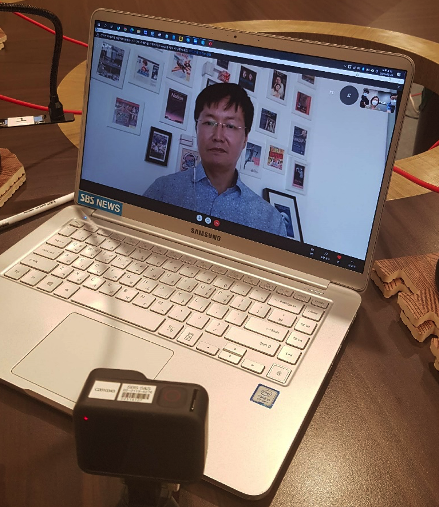
Recording of the Fifth Podcast about Video Production of the Performing Arts ©KAMS
In the UK, video production and digitization of performances already started in the early 2000s but a decisive moment came in 2007. That year, BBC developed a mobile application called iPlayer enabling transmission of digital images. This occasion led the country to actively produce performance videos and to develop revenue models around the year 2010. It was also the year when the decision was made to organize the Olympics in London. As the country came to support sports with its budget allocated to the arts, the country’s performing arts scene needed a new revenue model.
Under these circumstances, the Digital Theatre was founded in 2009, thus becoming the world’s first online platform for subscription-based performances. The company’s founders were those who had developed BBC’s iPlayer. In the same year, the National Theatre also launched its NT Live. The National Theatre declared its mission “to produce high-quality performances that are enjoyable, adventurous and inspiring and to present them to as many people as possible.” In this regard, the movie theaters throughout the country have the capacity to attract as many people as possible. So the revenue model of NT Live became more and more stable. Every year, NT Live performances are screened at least 11,000 times at the UK’s 700 movie theaters and at least 2,500 times abroad.
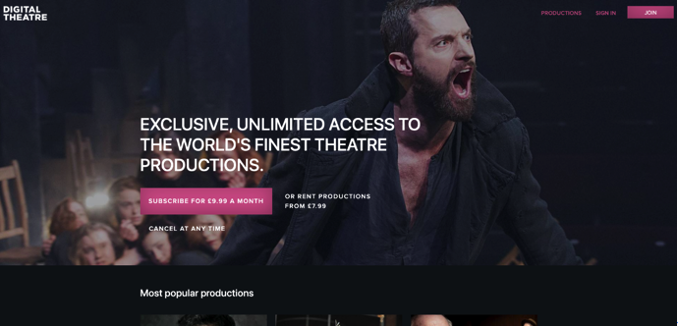
©Digital Theatre
The British government came to believe that the most urgent problem to solve in the video production and digitization of the performing arts is the lack of funds and human resources. So in 2012, BBC and Arts Council England established a foundation called The Space. It is a major institution supporting the video production and digitization of the UK’s performing arts. And in 2015, performances experimenting with the next step of video production began to appear. Such performances were produced under the banner of a “hybrid” genre combining AR, VR and immersive content.
The Space and The Encounter
The Space is a foundation playing a major role in the digitization of the British arts. Every year, about 800 arts companies benefit from the foundation’s support. The foundation’s goal is to apply digital technology to the country’s arts and to share artworks and their value with more people. The foundation not only supports creation and archiving but it also offers diverse training programs concerning marketing and distribution. For example, the foundation shares practical digital strategies that could be used by artists who lack understanding of multimedia. It also makes and distributes “tool kits” that help artists understand the audience of online performances and attract them.
Among the performances that have been produced with the support of The Space, "The Encounter" is regarded as the most successful case. Simon McBurney, artistic director of the British theatre company Complicité, planned to make a play telling a mysterious story of a photographer from National Geographic who went inside the Amazon rainforest. The director wanted to tell the story with sounds rather than visuals so that the audience could fill the blank with their own imagination. McBurney then asked The Space to help him express such an idea and work on online streaming and distribution.
The Space understood the company’s needs and started by finding a 3D sound system. The foundation then allowed them to use the Dummy Microphone (3D sound system developed by BBC in 2012) for its performance. (Looking like a human face, this microphone is also called Eddie.) The foundation also provided them with headphones for 600 seats.
The director hadn’t had any experience of live streaming, relevant information or funds. In collaboration with BBC, The Space asked BBC’s technical staff to participate in the live streaming of "The Encounter". Collaboration with BBC brought a tremendous educational effect to the creators who lacked understanding of technology. This occasion enabled McBurney to clearly see what platform and what technology to use for his performance.
During the first week of the performance’s online streaming, the number of views reached 67,000. In 2015, the performance had its successful premiere at the Edinburgh Festival Fringe. McBurney became a well-known director all of a sudden and the performance continued its world tour until 2018. After the outbreak of the pandemic, McBurney temporarily shared this performance on YouTube and Facebook for free. The performance is still recognized as a work epitomizing the innovation of an online performance.
Karen
"Karen" is a mobile application combining a drama, quiz and game. The British artists’ group Blast Theory launched it in 2015 in collaboration of the National Theatre Wales. Karen is the name of the mobile app and that of a fictional character appearing in the app. After you download the app and enter your name, Karen asks you several questions every day. Once you answer them, the information keeps being saved in the server. Little by little, Karen understands who you are, what your personality is like.
Later on, a real performer playing the role of Karen calls you about twice a day. You then talk with Karen who is kind and humorous. Such a talk feels like both a game and reality. In this context, Karen also asks you very personal questions. From that point, you form a subtle, personal relationship with Karen. Indeed, Karen’s questions were elaborately designed to understand human psychology.
At the end of the game, you get two gifts. The first one is to get an invitation from Karen. You can meet with Karen in a designated place in the UK, only for an hour, just once. After talking with Karen in this way, you can even purchase the big data Karen collected about you. The price is approximately 5,000 won.
When producing "Karen", Blast Theory focused on the fact that the government, credit card companies and global IT businesses like Google and Facebook have secretly collected information on who we are; we are just unaware of it. So "Karen" started with the artists’ idea of making an amusing game using such big data. In short, the performance brings the strange experience of big data in today’s society down to a personal level so that the audience can have that experience themselves.
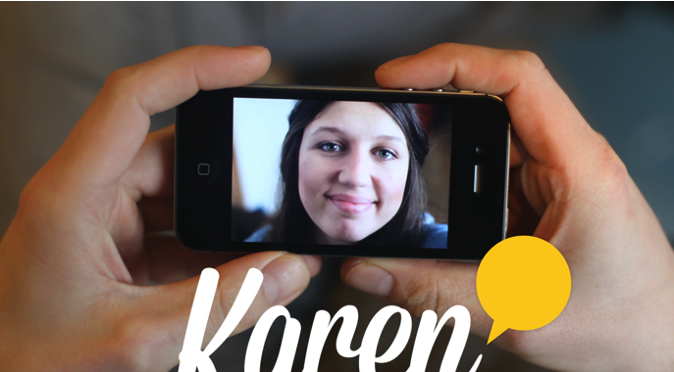
©Blast Theory
Live Performance VS Online Performance -2016 Survey
In 2016, Arts Council England conducted a nationwide survey entitled “From Live to Digital: Understanding the Impact of Digital Developments in Theatre on Audience, Production and Distribution.”[LINK]) The results of the survey are interesting. First of all, it turned out that the digital developments of the performing arts have almost no impact on the audience of live performances. In fact, NT Live performances are screened at the UK’s 700 movie theaters but that had almost no impact on the local tours of the performances.
In addition, those watching online performances are different from theatergoers. Viewers of online performances are younger and their spectrum is wide. And the audience of online performances are not very interested in the “liveness” of the performances, which is an important value for theatergoers. Rather than that, online viewers pursue economic feasibility and convenience. They don’t think that performance videos “replace” the live ones. They consider online performances as a separate “genre.”
Since this survey in 2016, the British performing arts scene has increasingly believed that the digitization and video production of live performances have a positive impact on the performing arts market, thus leading to more new and diverse attempts.
Marquee TV
Marquee TV is an online performance video platform which was established in 2018. Its founder is Simon Walker who developed BBC’s iPlayer. In 2019, the platform launched its global service starting from the US, the UK and Canada. Its target audience are aged between 16 and 24. Those belonging to this age group have enjoyed online streaming without even going to movie theaters or performance venues. And they are sensitive to prices.
If you pay an annual fee of about 120,000 won, you can watch all performances on the platform unlimitedly. The platform obtained the right to the global live streaming of performances from the Royal Opera House and Royal Shakespeare Company. It also provides performance content from 16 performing arts companies. Its major genres are opera and dance. With the increase of online performances amid the pandemic, Marquee TV has also strengthened its marketing.
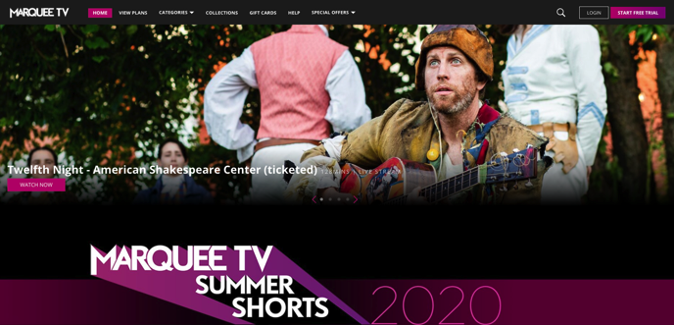
©Marquee TV
LIVR
Launched in the UK in 2019, LIVR is the world’s first VR theater platform. Since March 2019, LIVR has mostly presented VR versions of small-scale plays, performances from the Edinburgh Festival Fringe and stand-up comedy shows. Once you pay a fee of about 8,000 won to join the platform, you get a VR headset for free. After installing the mobile application of LIVR and opening the app, you need to connect the headset to your phone and put it on. You then see a 3D image of a red pointer. You can move your head to the left or to the right to put the red pointer on the icon you want. The performance then starts automatically. You would feel like you are actually seated in a theater. Indeed, you can enjoy content that was filmed by rotating 360 degrees from the best seat in a theater.
Draw Me Close
It is a hybrid play combining the immersive theater and VR. It was co-produced by the UK’s National Theatre and the Canadian Film Centre. It participated in the New York Film Festival and was screened at the Old Vick theater in the UK in February 2020. Once you enter the theater, the director or staff explains how the performance works. You then put on a headset and move toward the stage, guided by the staff.
The play has only two characters: a mother diagnosed with cancer and her five-year-old son. This is a one-on-one play unfolding the mother’s life story of 65 years. You talk with the mother and have actual contact with her. In this process, you play the role of her son. Traditional performances have relied just on audiovisual elements but this play is innovative in that it changes the existing stereotype of the theater by using people’s sense of touch.
The immersive theater, with which British theatre company Punchdrunk already experimented about 20 years ago, is now forming a clear trend in the performing arts scene. An immersive play called "Sleep No More" has no boundary between the stage and seats and the performance enables the audience to go into it to enjoy themselves. Although the play isn’t staged currently due to the pandemic, it gained great popularity to the point that New York and Shanghai built theaters exclusively used for this immersive play. Draw me close is a performance that goes a step further form this type of the immersive theater.
Punchdrunk recently announced that they would produce a new immersive performance in collaboration with Niantic, producer of "Pokémon Go". It would be something exciting to see how this new production would combine VR, AR, a game and a performance.
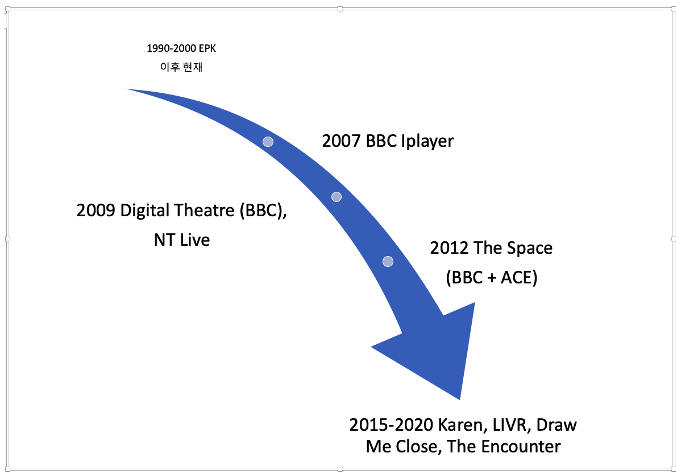
General chart © KIM Junyoung
Today’s Performing Arts Scene in the UK
In the UK, theatergoers are twice as many as spectators of the Premier League. In British economy, the performing arts industry has an important status. Andrew Lloyd Webber, a master of musical theatre, is so influential in the British performing arts scene that he can contact the prime minister directly. The country’s performing arts field has presented diverse hybrid works combining online performances, videos and technology for a long time, ceaselessly making new attempts. However, the pandemic has kept artists from performing live, which is a huge crisis for the country’s entire performing arts industry.
The British performing arts scene is searching for ways to continue live performances. Andrew Lloyd Webber studied Korea’s preventive measures such as strict quarantine, collection of information on the audience and social distancing for theater seats. He then staged a performance in the theater owned by him to test the measures. Nevertheless, the British performing arts field reacted to it by saying, “We can’t do it that way.” The British government concluded that the country’s performing arts field would not survive with social distancing in the theater and it started a meticulous study to find out about the likelihood of infection during a performance.
The creative industries have constituted a driving force behind British economy. So the country is one of the leading countries in the performing arts field. That would be because the country has a strong support system that gives practical help to artists so that they can survive in their market. In particular, the results of the 2016 survey conducted by Arts Council England provide something to think about for the Korean performing arts scene that is still resistant to and worried about online performances that have increased since the onset of the pandemic.
Although the global performing arts field is going through a crisis due to the pandemic, new opportunities are also coming. The five podcasts about “Video Production of the Performing Arts” would not be able to suggest the right answer concerning how to overcome the crisis of the performing arts scene and how to catch new opportunities. We just hope that what we thought about together are helpful, even a little bit, for everyone’s journey toward the right answer.








 PREV
PREV
.jpg)
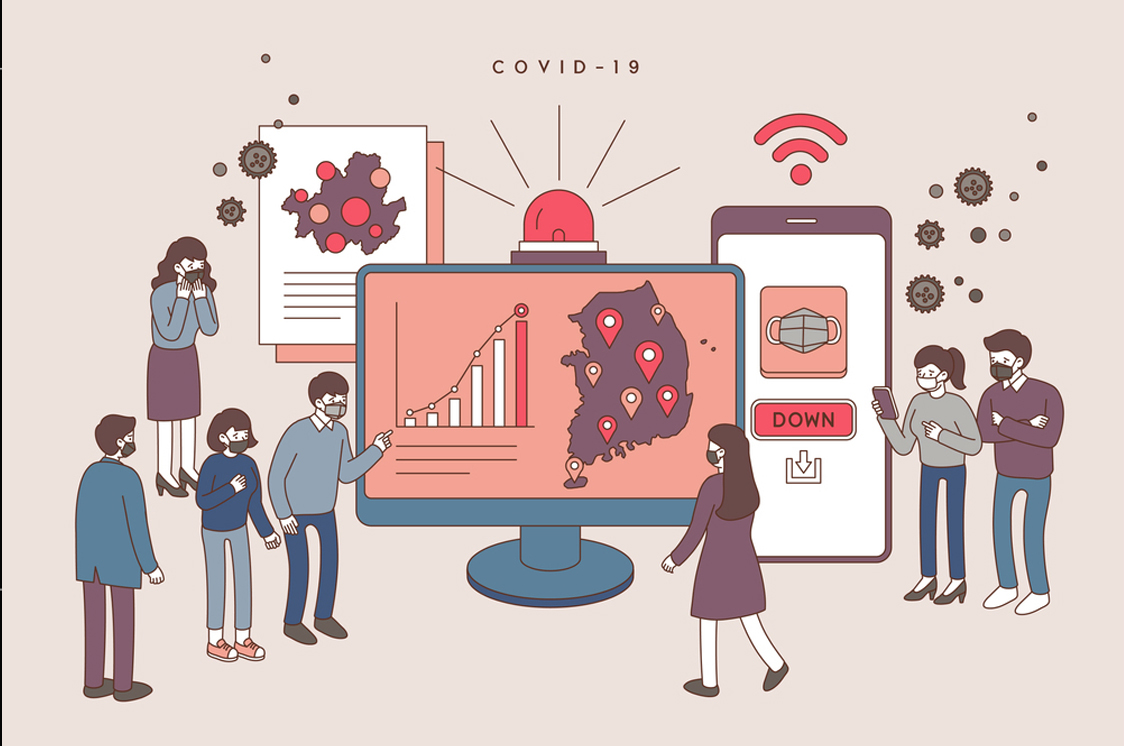
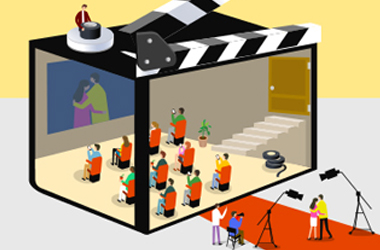
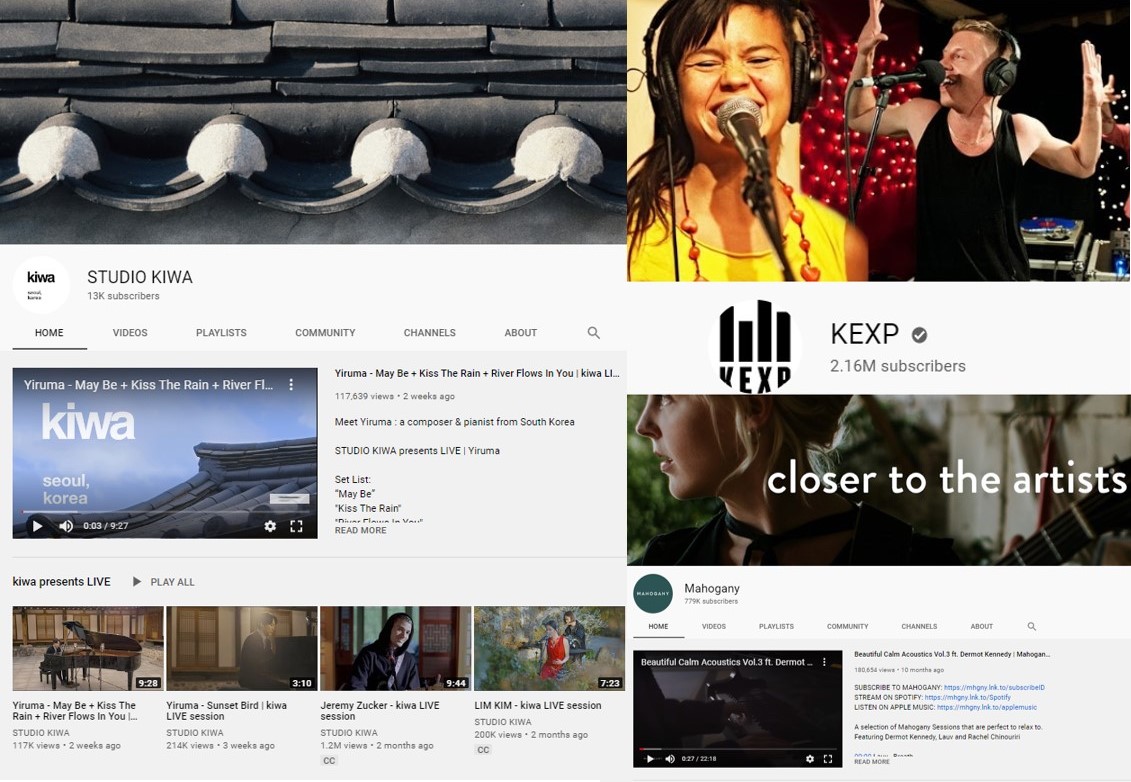
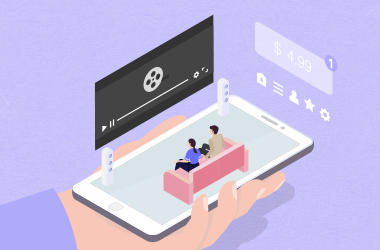
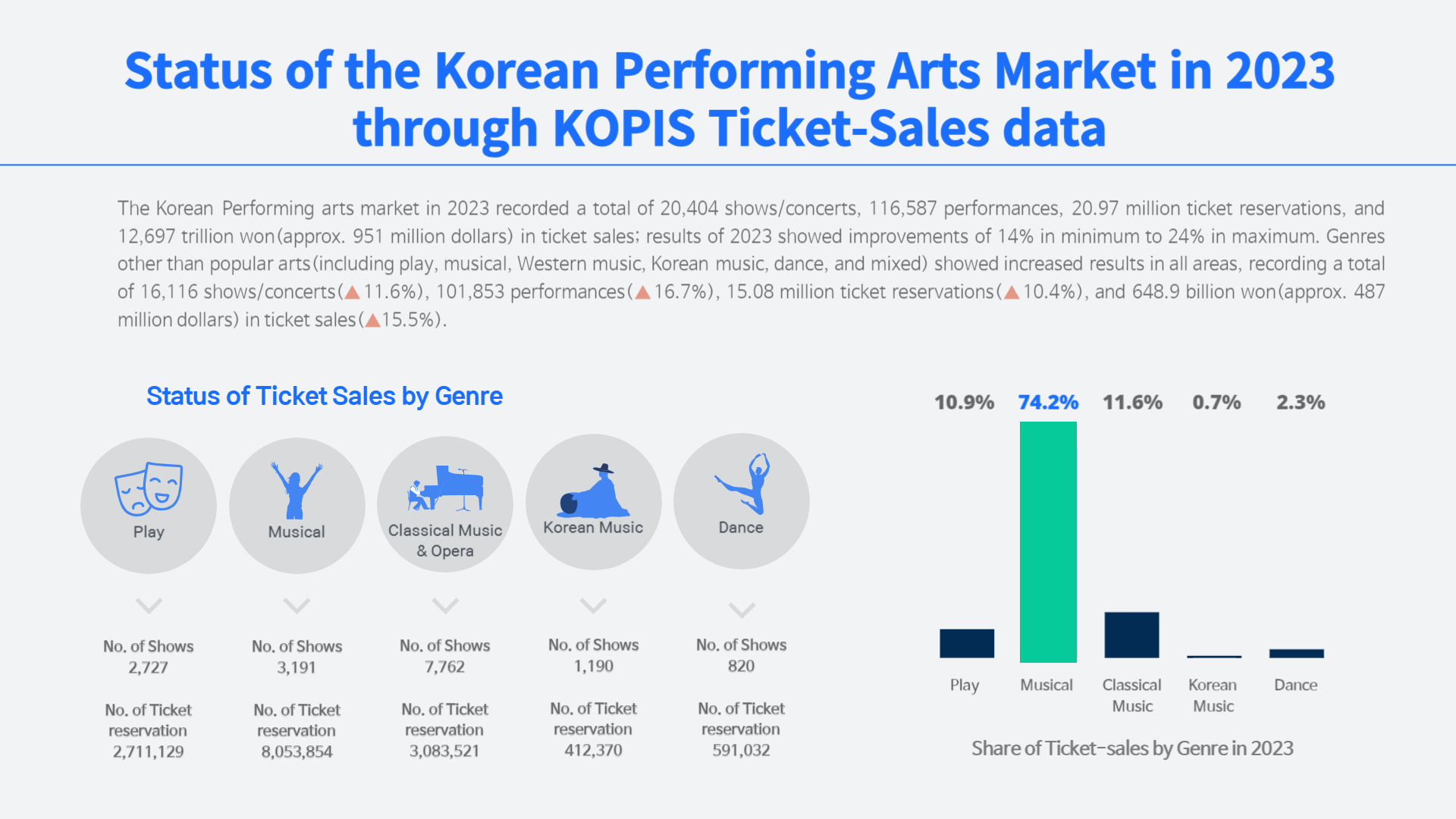
.jpg)
.jpg)
.jpg)
.jpg)











